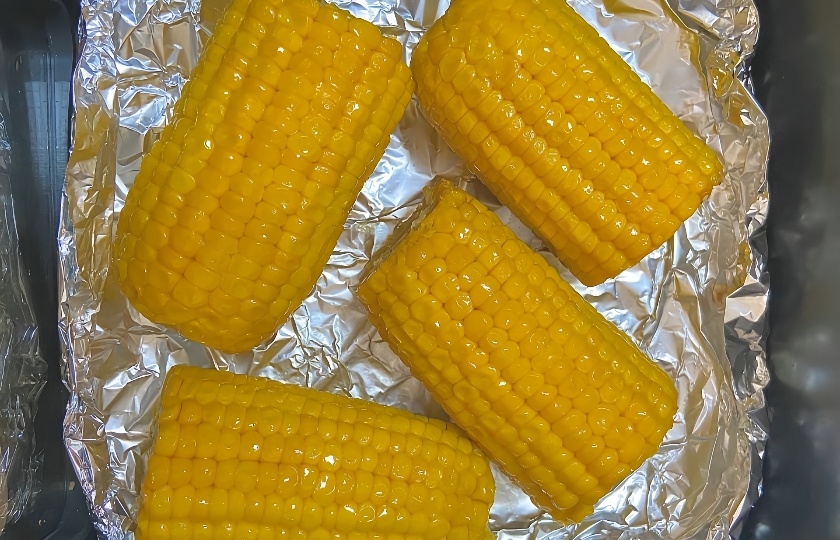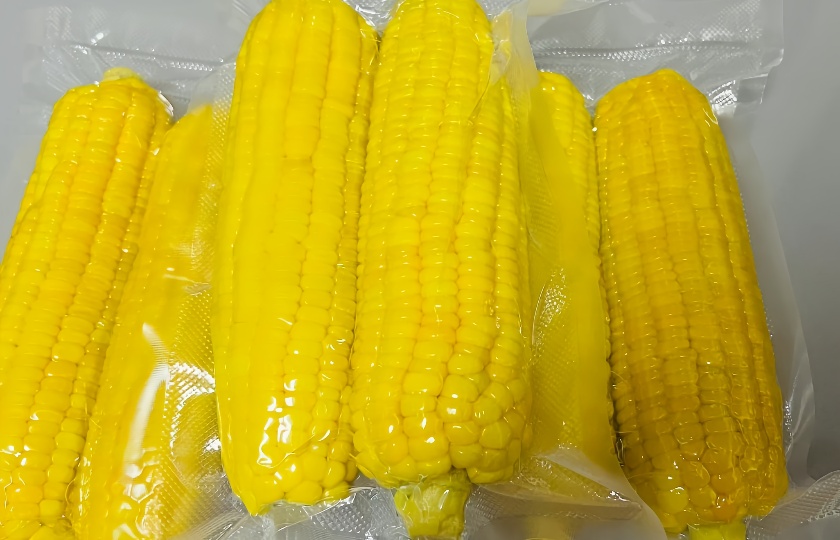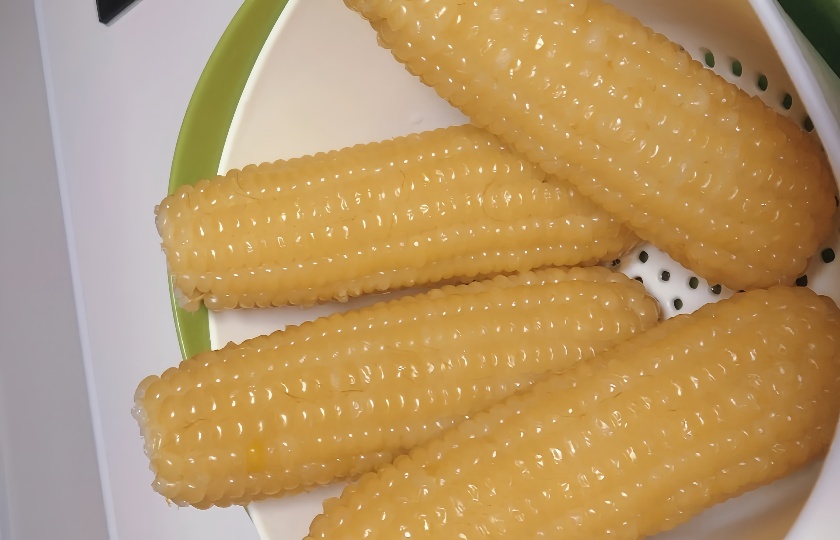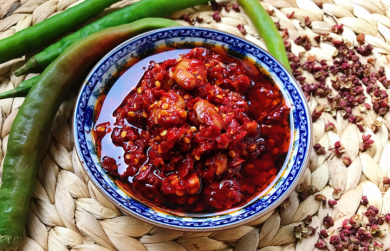Delicious Ways: How to Cook Frozen Corn on the Cob?
 Ever find yourself with frozen corn on the cob in the freezer, wanting to turn it into a delicious dish but unsure how? Don't worry! Today, I'll share some great methods for cooking frozen corn on the cob, ensuring it becomes a delightful addition to your meal.
Ever find yourself with frozen corn on the cob in the freezer, wanting to turn it into a delicious dish but unsure how? Don't worry! Today, I'll share some great methods for cooking frozen corn on the cob, ensuring it becomes a delightful addition to your meal.
Can you cook corn on cob from frozen?
Here are several effective ways to cook frozen corn on the cob
1. Boiling Method
Place the frozen corn on the cob directly into a pot filled with enough water to cover the corn. Bring the water to a boil over high heat, then reduce to medium-low heat and cook for about 10-15 minutes. You can add a pinch of salt to the water to enhance the corn's flavor. Once done, use tongs to remove the corn and let it drain. This method is simple and convenient, preserving the corn's natural taste and yielding a tender texture.
2. Steaming Method
Add an appropriate amount of water to a steamer and place a steaming rack inside. Put the frozen corn on the cob on the rack, cover the pot, and bring the water to a boil over high heat. Then, reduce to medium heat and steam for 15-20 minutes. For extra flavor, you can spread a little butter or sprinkle some black pepper on the corn before steaming. The steamed corn will have a bright color and a light, fresh aroma.
3. Microwave Method
Wrap the frozen corn on the cob in a damp paper towel, ensuring the corn is fully covered. Place it in the microwave and heat on high for 5-7 minutes. The heating time can be adjusted based on the size of the corn and the power of your microwave. This method is fast, and the heated corn retains a nice, slightly firm texture while preserving its nutritional value.
4. Grilling Method
If you enjoy grilled corn, start by thawing the frozen corn on the cob. Place the corn on a grill over low heat, turning it frequently. During grilling, you can brush the corn with a layer of oil and sprinkle some cumin powder, chili powder, or other seasonings. Grill for about 10-15 minutes, until the corn is golden brown and aromatic. Grilled corn has a crispy exterior and a tender interior, offering a unique and delicious flavor.
What Makes Frozen Corn on the Cob Chewy?
There are several reasons why frozen corn on the cob has a chewy texture:
1. Corn Variety
Certain varieties of corn, like glutinous corn, are naturally plump and high in starch. The starch in the corn cells remains tightly packed, even after freezing. When cooked, this structure remains, giving the corn a chewy texture. For example, Northeast sticky corn has a high starch content, and when frozen and then cooked, it becomes tender yet chewy.
2. Freezing Process
During freezing, the water in the corn turns into ice crystals. These ice crystals alter the structure of the corn cells by expanding the spaces between cells without completely destroying them. When cooked, the ice crystals melt, and the cells regain some of their elasticity, resulting in a chewy, springy texture that enhances the overall chewiness of the corn.
3. Cooking Method
The way you cook the corn also affects its texture. Boiling for the right amount of time can give the corn a firm texture. If boiled too briefly, the corn remains hard; if boiled too long, it becomes mushy. Cooking it for just the right amount of time maintains its structure and chewiness. Grilling also helps; the surface moisture evaporates while the internal moisture is retained, resulting in a good texture and chewiness.

Why Add Sugar When Boiling Corn on the Cob?
1. Enhances Sweetness
Corn's natural sugars can diminish during growth or storage. Adding sugar during boiling acts as a "sweetness booster." The sugar dissolves in the water and seeps into the corn kernels, making them taste sweeter and more flavorful.
2. Improves Texture
Sugar helps make the corn kernels softer and plumper, much like giving the corn a "sweet spa treatment." This allows the kernels to absorb more water, resulting in a tender and delicious texture.
3. Maintains Color
From a cooking perspective, sugar aids in maintaining the corn's color. During boiling, sugar can undergo the Maillard reaction, enhancing the corn's golden-yellow hue and making it more visually appealing and appetizing.
Should You Thaw Frozen Corn on the Cob Before Grilling?
If you have the time, it’s best to thaw frozen corn on the cob before grilling. Ice crystals inside the corn can impede heat transfer, leading to a situation where the outside is charred while the inside remains undercooked. Thawed corn also absorbs marinades better, resulting in richer flavors.
If you’re short on time, you can grill it directly from frozen. However, use low heat and turn the corn frequently. Since the corn is cold, high heat can cause the surface to char quickly. Frequent turning helps ensure even cooking, but the texture might not be as good, and the inside could be a bit tough compared to thawed corn. Ultimately, choose based on your situation, but be aware that thawing affects the final texture and flavor.

Can You Overcook Corn on the Cob?
Yes, you can overcook corn on the cob.
Texture: Overcooked corn has a poor texture. Properly cooked corn is plump and has a firm, elastic bite. Overcooked corn loses its elasticity and becomes mushy, sometimes even bursting.
Nutrition: Overcooking can lead to nutrient loss. Corn is rich in B vitamins, which can be destroyed or leached out during prolonged cooking.
Appearance: Overcooked corn also changes in appearance, with kernels losing their bright, appealing color.
To avoid these issues, pay attention to cooking time to maintain the corn's texture, nutrition, and appearance.
Can You Heat Corn on the Cob in the Microwave?
Yes, you can heat corn on the cob in the microwave.
For Fresh Corn: Wrap the corn in a damp paper towel to retain moisture. Microwave on high for 3-5 minutes, adjusting the time based on the size of the corn and the power of your microwave.
For Frozen Corn: First, thaw it either at room temperature or using the microwave's defrost function. Once thawed, wrap it in a damp paper towel and microwave on high for about 5-7 minutes. Since frozen corn has altered internal structures, it may need a bit more time to heat through.
Microwaving corn on the cob is convenient, but the texture will be different from boiling, often with a chewier bite. Be sure to follow the proper steps and adjust the heating time to achieve the best results.























